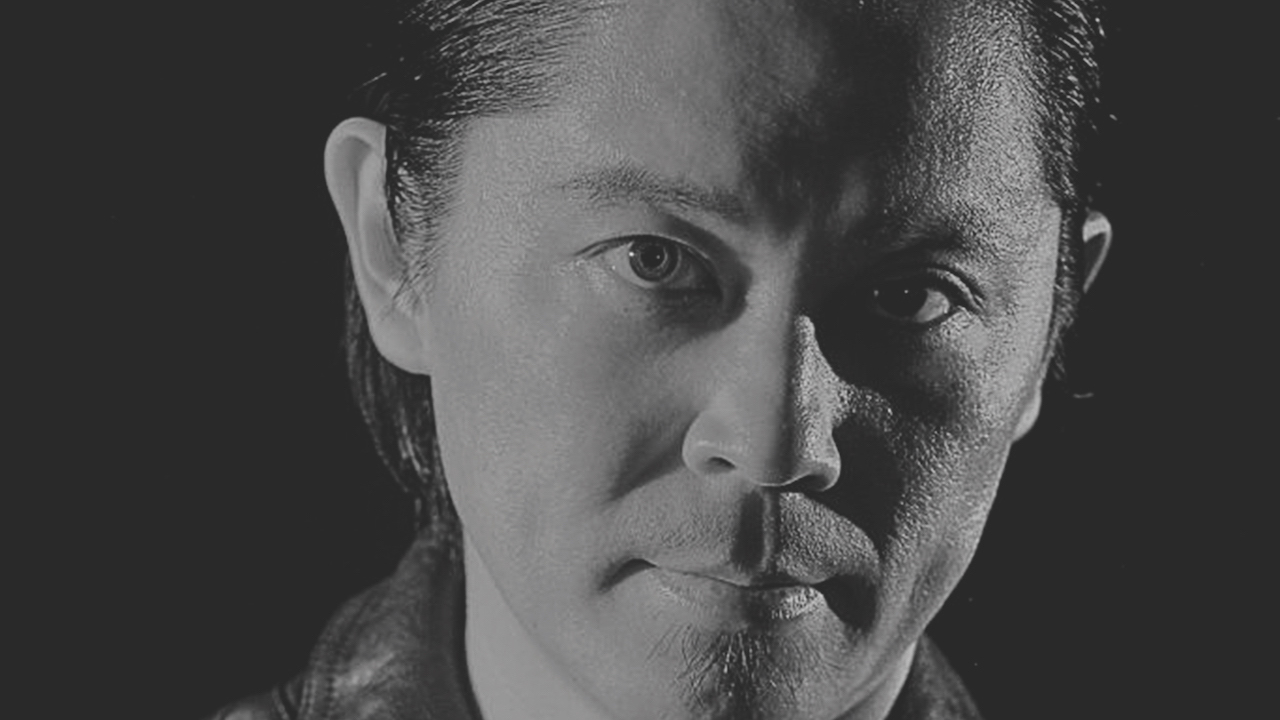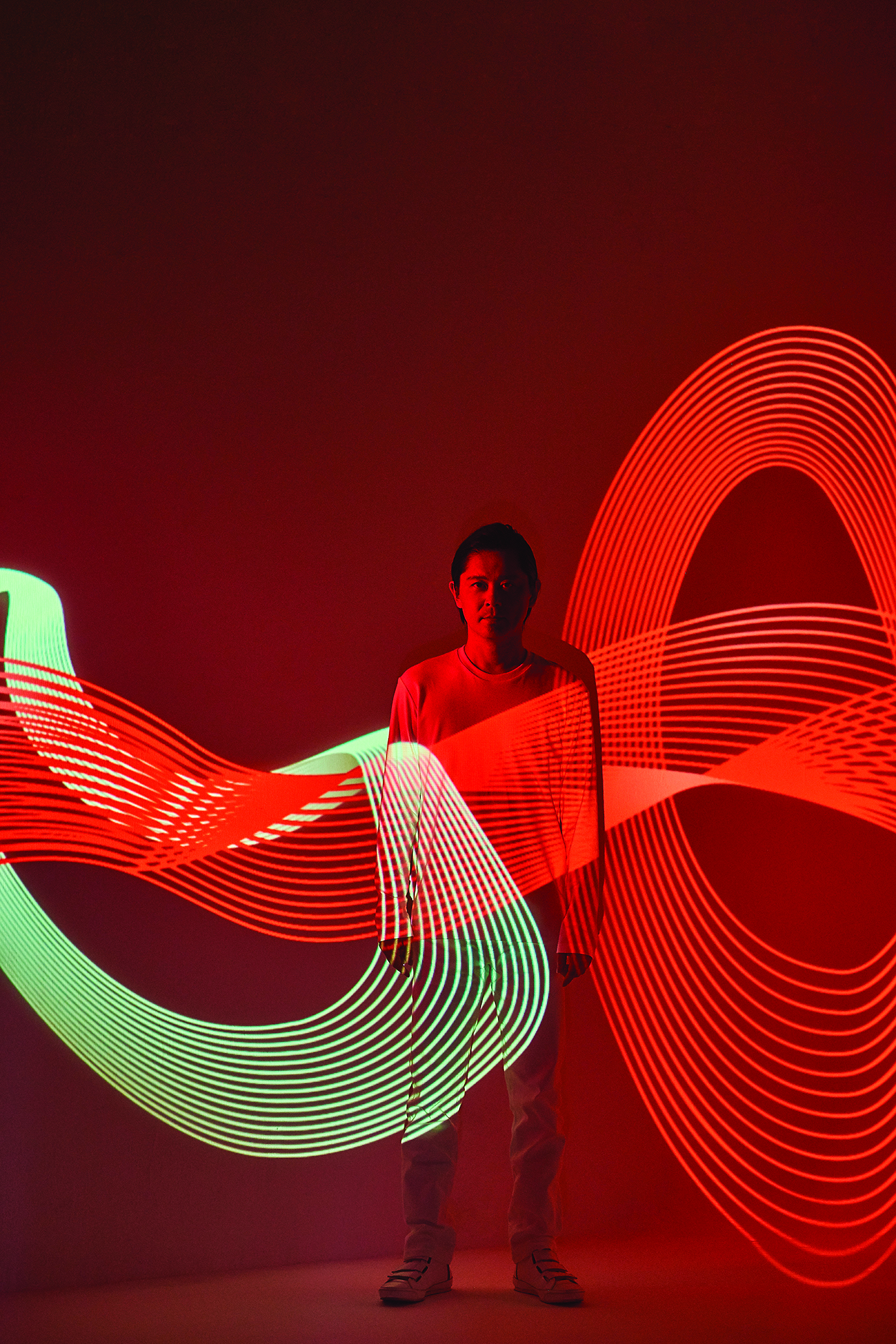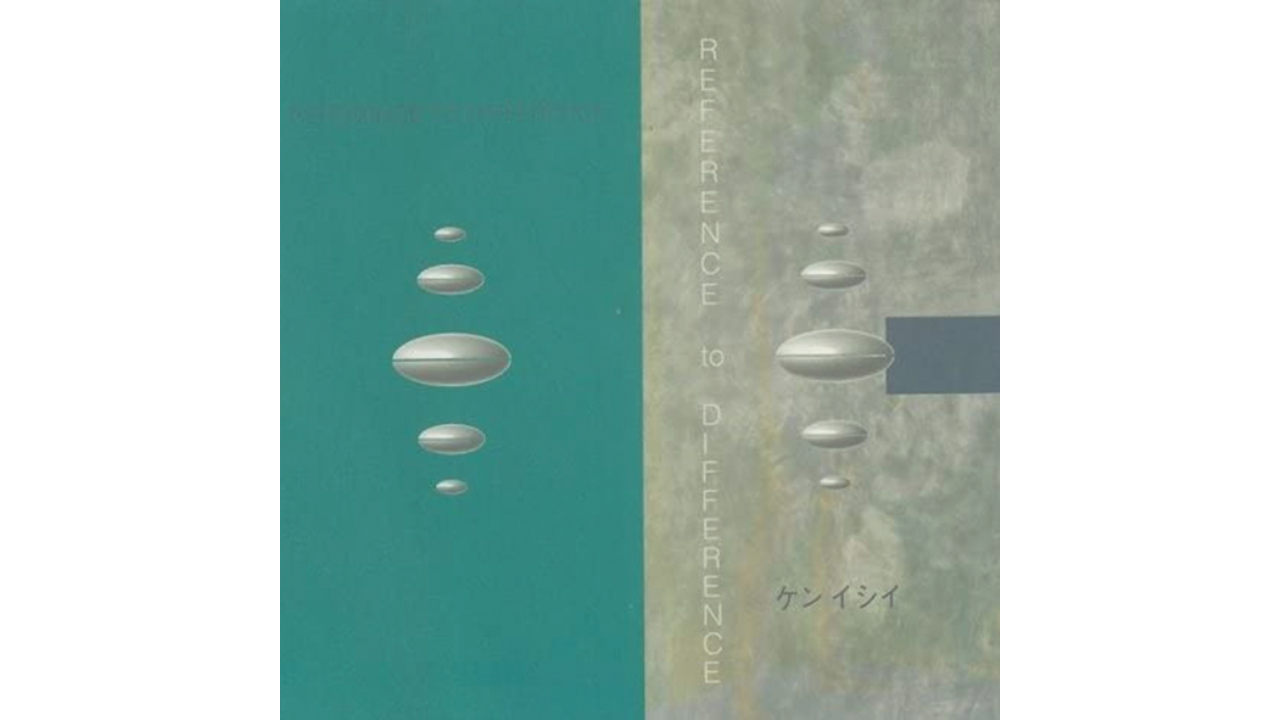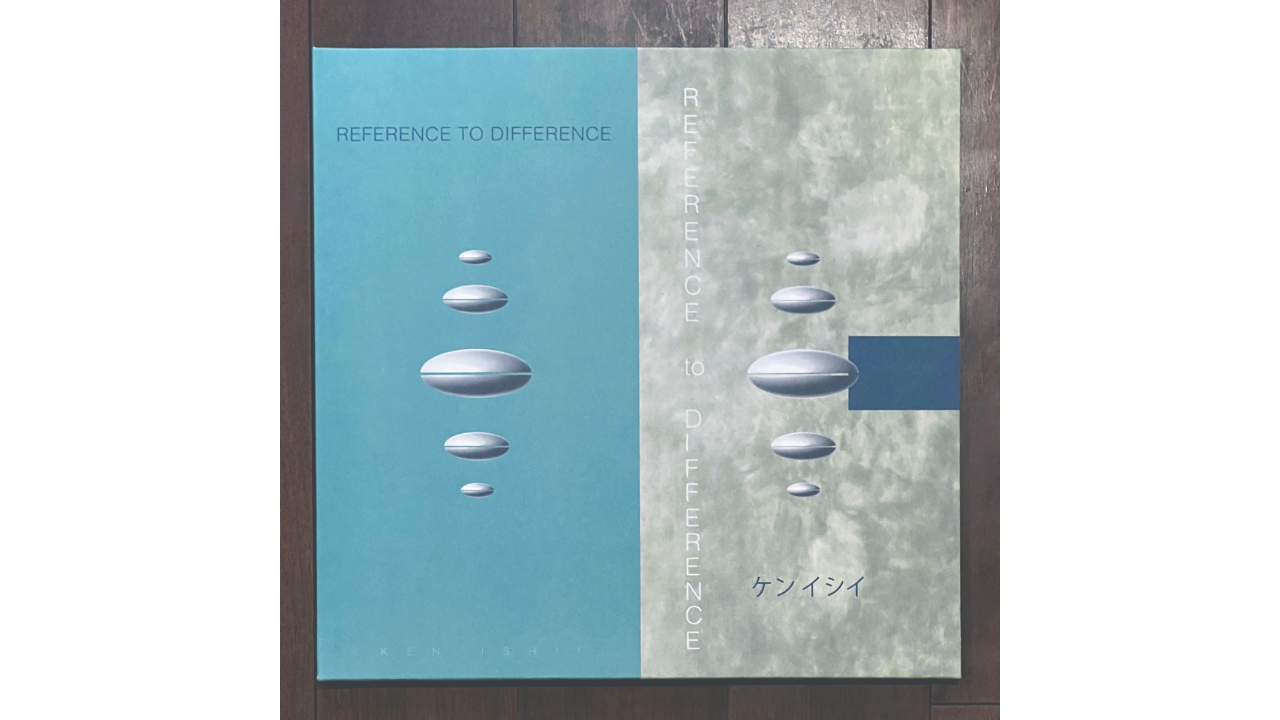
For his second full-length album, and his first on a homegrown Japanese label, legend ambient techno producer Ken Ishii wanted to up his game. Motivated by the need to deliver something new, experimental and exciting, he began building on the lush and low techno templates of his debut – 1993’s Garden on The Palm, released on the cult R&S Records imprint. Adding in new textures and influences, showcasing many more sides to his sound.
“I aimed to make something I hadn’t shown on my first album and bring it out to the world,” says Ishii. “I wanted Reference to Difference to be more diverse, so I started to combine these melodic, ambient and fierce elements together with my techno-influenced sound.”
Also in the melting pot were strong nods to the architects of Detroit techno, the bleeps and bloops of Warp Records’ most revered noise-makers, and the pioneering electronic fusions coming out of the late ’70s and early ‘80s.

“I took a lot of inspiration from the techno of Derrick May, Juan Atkins and Kevin Saunderson, the Artificial Intelligence compilations, Black Dog Productions, as well as Yellow Magic Orchestra and other Japanese techno pop of that era,” says Ishii.
“You can also hear bits of Conny Plank’s productions like D.A.F., and some of minimal classical artists like Steve Reich, EBM bands like Nitzer Ebb and Front 242, and even the rock bands I loved like Japan, Devo, Talking Heads and King Crimson.“ It was a case of developing a style from the music he liked, away from current trends – not that the nascent Tokyo techno scene would have had much pull over him.
“Back in ’93/’94, when the album was produced, the electronic music scene in Tokyo was still small and had not matured, so there wasn’t a strong trend to follow,” says Ishii. “Although early techno and house were being played in clubs, I didn’t care about it. I just wanted to make what I wanted to make.”
The resulting album would be a high water mark for Japanese techno, with each of its six crisp and clean, man-machine movements pushing both the form and Ishii’s name forward.
In the studio with Ken Ishii

“I did all the pre-production in my bedroom in Tokyo,” say Ken Ishii. “I used to call it the Far East Lab. It was very basic and plain, and just like a Japanese student’s tiny bedroom. I remember it was ’93/’94, and I was a beginner. The setup was not spectacular – no computer. I had a Korg M1 synth, a Roland JD-800, an S-760, S-330 and a CPM-120II. Then, a Yamaha REX50, TX81Z, a RX-21, and an Akai S612 with a MD280 disc drive. And I had a Korg DDD-1 drum machine, a Kawai Q-80 sequencer, a Tascam MM-200 mixer, and a Boss SE-70 effects unit. There was no proper sound system – I was using a Pioneer mini component for monitoring.
“The label, Sublime, seemed to need better sound quality, and they were kind enough to put me in a commercial studio with a big SSL desk, which was Tribarythmo Studio in Tokyo, for me to have a proper mixing experience for the album. I remember I brought all my gear into the studio to reproduce the album tracks.”
Track by track with Ken Ishii

Into The Inside
“This is a ten-minute-long ambient track with non-4/4 kick drums. I hadn’t made such a long track like this before, so it was a challenge for me. I think I produced it entirely with the Roland JD-800, because I’d just bought it and wanted to explore it while making this track. I was also experimenting with beats like triplet-rimshots and half-tempos on the kick.
“I actually haven’t listened to this track for many years, and just had a listen when a new remaster was done recently. It sounded quite fresh to me, because in this song I was making a couple of things happen with arrangements which I don’t do anymore. Maybe it’s because I didn’t know any musical theory at that time, so I simply did something I felt was interesting to me.
“It’s usually a challenging thing to include this kind of ambient track as a first track of a techno album, but I remember I insisted to the record company to do so. Thanks to my label, Sublime Records, they accepted it in the end.
“I made an answer song to this track around the same time and called it Out of The Inside. It was with a 4/4 kick and a fair tempo. It was a self remix, or a rework of the track. It came out in ‘95 as a bonus track for the reissue of Reference to Difference.
“Since R&S had wanted an exclusivity of my artist name, Ken Ishii, as the record company that ‘discovered’ me, I decided to use a new artist name, Flare, when I released music on Sublime.
“So, that reissue became my first album as Flare, eventually. Although it’s normal to release your music on different labels with the same artist name these days, exclusivity of your artist name was thought to be very important at that time.”
Fading Sky
“This was the first track I produced for Sublime Records, prior to the album. And this was the very first release they made as a label, with a handwritten, numbered 7” included. They might have wanted to see how the market reacted to this release and planned how they would manage the label between this release and the album release – 1994 was before the techno explosion in Japan.
“This track is clearly influenced by the melancholic side of early Detroit techno, but I wanted to interpret it in my own way, not copy it.
“It’s worth mentioning that I didn’t use any typical, standard and known gear to make this old-school techno, such as the Roland TR-808, 909, TB-303 or the Juno-106. The synths I used for this track are mostly the Roland JD-800 and Korg M1 for the piano-ish sound. The portamento mono synth sound is from the Yamaha TX81Z. And the kick drum is a layer of the internal sound of JD-800 and the Korg DDD-1.
“I really just stuck to my own workflow in the studio. I completely taught myself about producing music with this gear, and I couldn’t do it any other way at that time, actually. So, it was a fresh learning experience for me when I mixed this album at Tribarythmo Studio in Tokyo.
“The biggest lesson I learned making this was the fact that it is possible to make an album with limited gear and poor skills in a bedroom which can be talked about 30 years later, like this!
“I’m very lucky that I got to become an international DJ, being able to travel around to entertain crowds. These are totally different things, but both are pretty enjoyable, I can tell you!”
Non Essentia
“This is my most favourite track on this album. Listening back to it, after so many years, I discovered I was into a totally different, or a crazy way, of making sections of the track to how I would do it these days.
“Like I said before, I didn’t intend to make a dance track for this album, but something different, fresh and unheard of.
“I was really into IDM at that time. It sounded like it was free from electronic music’s typical formulas and rules, which really attracted me.”
“With this track, I kept a 4/4 kick going, but not a strong one. And the rest is not the techno you’d usually expect. And, after I finished I thought, ‘I’ve made my best track!’
“The kick is a sampled one and modulated and played with the Roland S-330. I loved those few playing functions that the Roland samplers only had. And I never went for Akai samplers, which everybody else was using.
“All the synth sounds are from the Roland JD-800. The percussion sounds are a combination of the Roland S-330 and JD-800.”
Finite Time
“This is my second favourite track! It has a similar musical direction and thought process behind it as Non Essentia. But this track sounds more melodic, though.
“It came from the influence I was getting from Detroit techno and some ‘colourful’ IDM artists like Black Dog Productions. I would say that my main influences were, firstly, the pioneers of Detroit techno such as Derrick May, Juan Atkins and Kevin Saunderson. Then the Artificial Intelligence compilations on Warp Records were quite inspiring to me. But, the Black Dog Productions’ Bytes album really blew my mind.
“For tracks like this, I was under the influence of such Detroit-style music, but I was quite satisfied with how I took it – I felt like I successfully interpreted the Detroit influence into my own style, which was important to me.
I was really into IDM. It sounded free from electronic music’s typical formula
“The drum kit sounds were sampled from a Korg DDD-1 with stuff from the Roland S-330, and then layered and played with different keys. The main synth is the JD-800, again. And the pad is from a Yamaha TX81Z.
“The Roland JD-800 really gave me a signature sound. I couldn’t have lived without it. I started using this synth a few months before I was making this album. I loved this synth and seriously used it for the albums after it, such as Jelly Tones, Metal Blue America, and Sleeping Madness on R&S. And then on Grip, under the name Flare, on Sublime Records.
“I also used it for countless remixes and computer game soundtracks. This synth really gave me a number of signature sounds in that period, until 2000-ish.
“I used to use it when I did live performances, too. What I loved about this synth is that you could modulate PCM waves like an analogue synth to create new and unheard sounds. Its rhythm sound sources are great, as well.”
Interjection
“One of my major musical influences, before house and techno were born, was EBM [Electronic body music]. I never was a straightforward rock teen, but I was attracted to it because of its mixture of electronic sound and rock elements.
“This track may sound harder than the other tracks on this album because the drums, especially the kick and snare, sound loud and distorted. These are inspired by Ministry’s track Stigmata, which I used to listen to countless times for learning – I couldn’t reach his quality at all, though!
“The kick and snare are the Roland S-330. The hi-hats and cymbals are taken from my Korg DDD-1. The synths are JD-800 and M-1. Again, I was making music with quite limited gear, as you can see.
“Before making my professional debut, I had always wanted more gear and been jealous about rich kids who had lots of gear, but it was good in the end that I didn’t have much of it because I could probe into my limited gear and take the full ability out of it to make something interesting.”
Scene One
“Like the other tracks, the synths are the JD-800 and the Korg M1. And the rhythm tracks are from the JD-800 and my DDD-1.
“A lot of listeners and reviewers said, and still say, my music contains an oriental atmosphere on its melodies, harmonies and even percussion. I never had an intention to have my music sound like that – it’s completely unconscious, not as a gimmick.
“However, I recently listened to this album from beginning to end, and I think I see why people say that. It comes from my Japanese nature, I guess. Maybe it’s due to the limitation of my musical skills that I used to stick to those things without thinking?
“Being a producer is low key, and not fancy. You should be a craftsman, an expert or a geek. It takes you time to be a good producer. I’m always learning new tricks, as well as keeping myself inspired to produce new music.
“Now, I think I should mention that there are actually two more tracks that are connected to Reference to Difference – Morceau and Out of the Inside.
“They were produced around the same period, but came out on a vinyl reissue the following year. The Musicmine/Sublime label is planning to reissue these tracks in the near future as well, so watch this space!”
• For all his latest gig dates, news, merch and music links, hit up: kenishii.com
30th anniversary of Reference To Difference

A brand new 30th anniversary remaster is now available on vinyl with its original track list for the first time, so new legions of die-hard fans can lose themselves in the body-rocking tones and textures of this dance music delight. Reference To Difference have received the full reissue treatment, dropping on vinyl with its original track list for the first time, and with liner notes by Wax Poetics journalist and DJ, Martyn Pepperell.
Elsewhere, Ken’s been busy on Bandcamp with his Unreleased Works digital series, currently up to Vol. 12. And he continues to keep eyes and ears on his own 70Drums label, with new music and merch always popping off.







